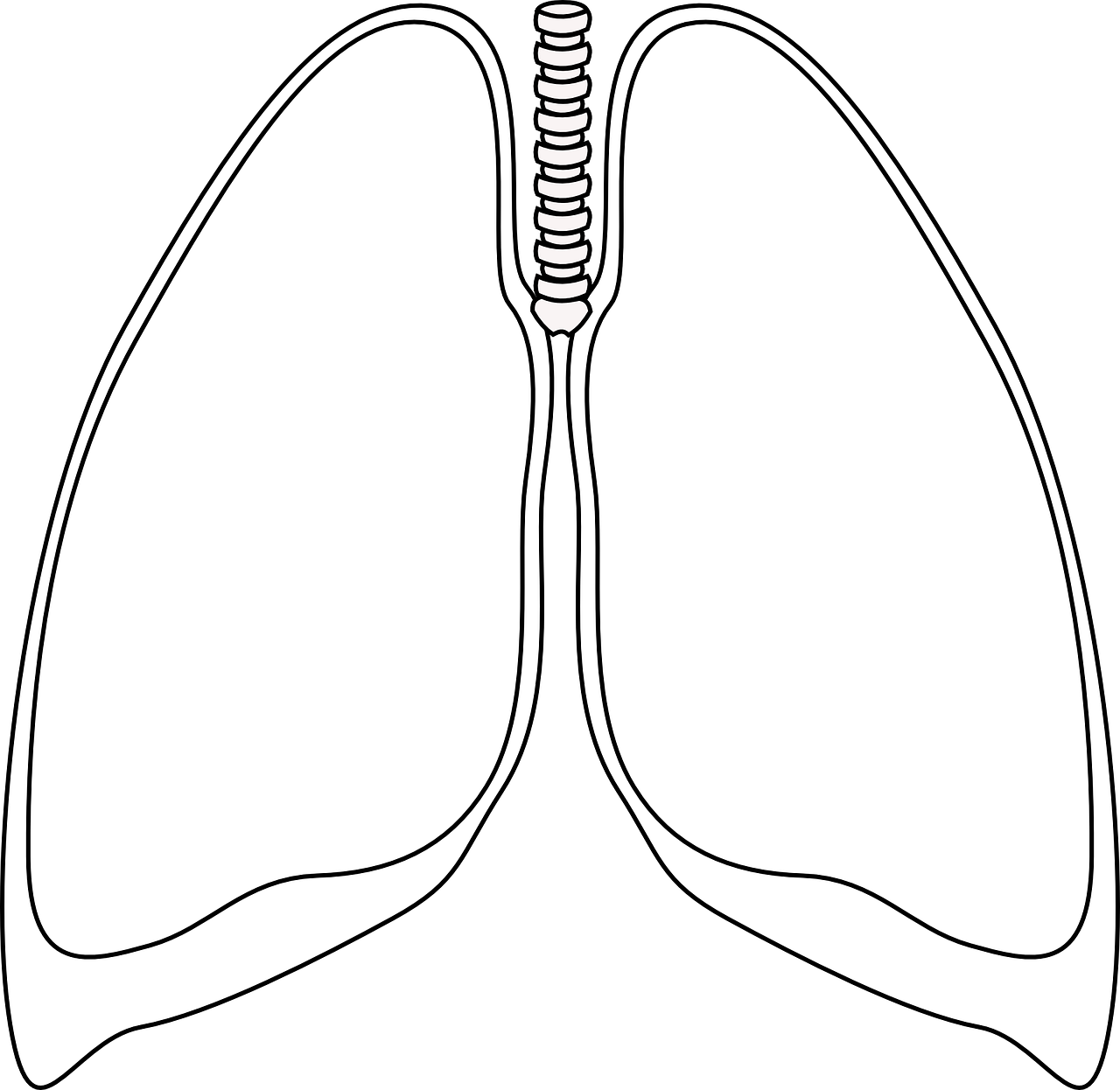COPD affects more than 11 million people in the US, both men and women alike. However, there are some noticeable differences between how men and women are affected by the disease.
For example, in recent years, significantly more women than men have been diagnosed with COPD. Men and women can also have different COPD symptoms, and gender can even affect how quickly the disease progresses and gets worse.
Other differences show up in the doctor's office, when doctors give different care to men and women with early symptoms of the disease. This results in many women having to wait longer to get tested and diagnosed for COPD.
While these differences don't apply to every man and woman, they play a role in many people's experiences with COPD. That's why, in this post, we're going to explain this gendered phenomenon and shed some light on why it matters.
In the following sections, we'll show you how COPD affects people of opposite sexes differently and take a closer look at where these differences come from. We'll also explain what these differences actually mean for men and women who have—or who are at risk for developing—COPD.
{{cta('43b79c5e-6bd6-4f02-ac27-2d038d20c146','justifycenter')}}
Differences Between COPD in Women and Men

It is possible for just about anyone to get COPD, but the disease does not affect all groups of people equally. This is reflected in the fact that people from different regions, nationalities, and sexes tend to get the disease at different rates.
However, this is not because the disease is fundamentally different in different types of people. Rather, it's because COPD is linked to secondary factors that tend to affect people in certain groups more than others.
In other words, when it comes to gender, COPD is associated with traits that tend to differ between men and women. Some of these differences are rooted in biology, but many of them are instead rooted in lifestyle and behavior.
In general, you can divide these differences into three main categories:
- Differences in risk, or how likely men and women are to develop COPD
- Differences in disease, or how COPD affects men's and women's bodies differently
- Differences in psychological symptoms
Differences in Risk
In general, women seem to have a higher risk of developing COPD than men. There are many potential reasons for this, but hormones and physical traits, like smaller airways in women, likely play a role.
This difference seems to be significant, especially among people who smoke tobacco, which is the number one cause of COPD. Research shows that women who smoke less than men actually tend to experience worse lung function decline.
This means that women who smoke are more likely to develop COPD and other lung diseases. Women are also more likely to develop symptoms of COPD at an earlier age.
Statistics show that about 58 percent of people who have COPD are women, and that women make up a slightly higher percentage—53 percent—of those who die from COPD. When you consider that about 15.5 million people in the US have been diagnosed with the disease, that adds up to about 9 million women and 6.5 million men with COPD.
However, this is a relatively recent phenomenon that is strongly tied to an increase in the number of women who smoke. Before the mid-1950's, it was largely men who smoked tobacco and later developed COPD.
Differences in Disease

A person's biological sex plays a role in how COPD affects their lungs. Because of this, men and women sometimes experience different COPD symptoms, and even differences in the overall severity of their disease.
For instance, COPD seems to progress more quickly in general in women than in men. This means that women with COPD often experience earlier and more severe lung function decline.
As a result, women's symptoms tend to be more severe—sometimes significantly more severe—and also tend to show up earlier in the disease. Women tend to experience worse shortness of breath, more frequent exacerbations, and are also more likely to die from COPD.
Men and women with COPD also tend to experience slightly different types of COPD (e.g. emphysema or chronic bronchitis), which can lead to different symptoms.
Men, for example, are more likely to have COPD dominated by emphysema, which tends to cause more fatigue-related symptoms. Women, on the other hand, tend to have worse chronic bronchitis, which causes more coughing and airway obstruction from mucus.
Additionally, while the death rate for men with COPD has fallen in recent years, the death rate for women has remained the same. While researchers aren't exactly sure why this is, declining smoking rates in men and quicker disease progression in women are the most likely culprits.
Women with COPD are also more likely to experience certain COPD complications like osteoporosis. This is partially due to the fact that osteoporosis is more common in women in general, but worse COPD symptoms in women also play a role.
Differences in Psychological Symptoms
Anxiety and depression are extremely common side effects of COPD. In fact, researchers estimate that up to 40 percent of people with COPD suffer from clinical depression while up to 20% suffer from clinical anxiety.
However, studies show that women with COPD are much more susceptible (PDF link) to these psychological disorders than men. This is likely influenced by a combination of several different factors, including the severity of COPD symptoms and high rates of anxiety and depression in women overall.
For instance, the fact that women experience worse symptoms and disease outcomes than men is enough on its own to explain much of this difference. More severe symptoms would naturally lead to more health-related stress, causing a higher incidence of anxiety and depression in women.
It is also worth noting that women, in general, tend to have significantly higher rates of anxiety and depression across the board. It is likely that the same factors that cause this general predisposition also apply to women with COPD.
Why Does Gender Affect COPD?
As you can see, there are a variety of important differences between how men and women are affected by COPD. However, while the facts and statistics are relatively straightforward, they don't exactly explain why these differences exist.
But before you can understand the reasons, you need to know how people develop COPD in the first place. Once you understand that, it's easier to see why certain groups of people (e.g. women) tend get COPD more often—and more severely—than others.
To put it simply, COPD is a breathing disorder caused by lung damage. It causes two main things to happen: it reduces the lungs' ability to absorb oxygen, and it narrows the airways so less air can flow through the lungs at a time.
This lung damage can be caused by many different things, namely diseases or substances that cause repeated irritation and inflammation in the lungs. For example, smoking, noxious chemicals, and other diseases like asthma can all cause COPD.
So, what does all this have to do with differences between the sexes? It's simple: COPD is caused by physical traits and patterns of behavior. Since men and women have different physical traits and different patterns of behavior, this naturally leads to differences in how likely men and women are to develop COPD.
For instance, in a biological sense, women tend to have smaller airways, which makes them more susceptible to damage. From a lifestyle perspective, however, men are more likely to work in occupations that could expose them to dangerous respiratory toxins.
Because of this, the differences between men and women with COPD are not always 100% consistent or clear cut. And, as men and women's habits and lifestyles change, so does their relative likelihood of developing COPD.
It is also important to realize that men and women do not always receive the same kind of medical care. This is another factor that could account for some of the differences we see between men and women with COPD.
Biological Differences

Men and women have different biological traits that affect their experiences with COPD. As we mentioned earlier, these differences can influence how likely someone is to develop COPD, what symptoms they have, and how quickly the disease progresses.
A person's biological sex influences both their physical traits and important hormones that regulate their health. Both of these factors can influence your likelihood of developing COPD as well as how your body responds to the disease.
The Effect of Airway Size

Studies show that women tend to have smaller airways than men, but not smaller lungs. This is a factor that could make some people more likely to develop COPD than others, and could partially explain why women seem to be more prone to COPD.
First of all, smaller airways could make women more sensitive to respiratory toxins like smoke. Because women have less total airway tissue, each bit of tissue gets exposed to proportionally more toxins when they breathe.
Compare a male smoker and a female smoker, for instance, who both have similarly-sized lungs but differently sized airways. When the man inhales smoke, the smoke will come into contact with a larger amount of airway tissue, since he has larger airways than the woman.
On the other hand, when the woman inhales smoke, the smoke comes into contact with a smaller surface area of tissue overall. However, she still inhales the same amount of smoke and toxins, meaning that the woman's airways are exposed to a higher “dose” of toxins per area than the man's airways.
This could explain part of the difference between men's and women's risks for developing COPD. Since women have smaller airways, they could be more prone to the damaging effects of cigarette smoke and other respiratory irritants.
The Influence of Hormones
Some researchers believe hormone activity could play a major role in how COPD progresses differently in women than in men. Having more estrogen, in particular, could make women's lungs more susceptible to damage from things like air pollution and smoke.
Researchers believe that estrogen worsens oxidative stress in the lungs, which could explain why smoking tends to affect women more severely. Oxidative stress occurs anytime the lungs and airways get inflamed by a respiratory irritant or infection.
Too much oxidative stress can damage the delicate tissue in the lungs, causing permanent scarring over time. COPD makes the lungs particularly sensitive, causing them to experience oxidative stress more frequently and severely.

Researchers have long noticed that women with COPD seem to have more lung scarring than men, and that the scarring tends to happen earlier on in the disease. This is true even for men and women with similar smoking histories who have lived with the disease for the same amount of time.
Because of this, women tend to have worse lung function and respiratory symptoms by the time they are diagnosed with COPD. The disease also progresses faster and causes death sooner in women than in men.
More recent studies have revealed that this effect could be caused by estrogen. Research shows that estrogen can significantly increase oxidative stress in the lungs, and experts believe this could make women more prone to both the risk factors and effects of COPD.
Since women produce more estrogen, their lungs and airways get exposed to extra oxidative stress any time they breathe in a respiratory irritant like smoke. This leads to worse and earlier airway tissue scarring in women with COPD compared to men.
This could also explain why women who smoke seem to experience quicker lung function decline than men. Estrogen could make their lungs more sensitive to respiratory irritants in general, putting women smokers at a higher risk for developing COPD and making women's COPD symptoms worse.
Genetic Diseases and Traits

Certain genetic traits might give some people a higher risk of developing COPD than others. However, while researchers know that genetics play some role in COPD, they still are not sure which genes those are or how they work.
It is certainly possible, for instance, that certain genes could predispose either men or women to develop COPD more easily. This is an ongoing area of COPD research, and more answers are likely to come in the future as researchers continue to untangle the genetic complexities of the disease.
Lifestyle Differences
On average, men and women tend to live different lifestyles, with different hobbies, occupations and household roles. While no man or woman is the same, there are, statistically, certain jobs, habits, and activities that either men or women are more likely to do.
These different lifestyles that men and women tend to choose have a significant effect on how likely they are to get exposed to harmful substances. And, as we know, how much someone is exposed to respiratory toxins is directly related to their likelihood of developing COPD.
Smoking

Cigarette smoking is the number one cause of COPD. As such, it is the most important factor in an individual person's risk for developing COPD.
One of the clearest ways to see this effect is to look at the changing rates of COPD among men and women over the years. In the mid-1900's, the vast majority of people with COPD were men; however, this changed in the late 1900's, as more women than men started to get diagnosed with the disease.
This change might seem strange until you realize that it is directly correlated to a major cultural phenomenon: more and more women started to smoke. Before then, a much larger percentage of smokers were men, and COPD was considered a male-dominated disease.
However, once this new generation of women smokers began to age, more and more cases of COPD began to show up in women. In fact, since 1980, the number of women who die from COPD every year has more than quadrupled in size (PDF link).
This made it clear that COPD wasn't a man's disease, but rather a smoker's disease, instead. Today, there is less of a gap between the percentage of men and women who smoke, and about 18 percent of men and 14 percent of women in the US are smokers.
This is the perfect example of how rates of COPD in a group can reflect lifestyles and habits that people in the group tend to share. After all, COPD used to be considered a “man's disease,” but this was almost entirely due to the fact that most cigarette smokers at the time were men, not any biological factor.
The Snowball Effect of Having Worse COPD Symptoms

People who experience worse COPD symptoms also have a reduced ability to exercise and do activities that require physical strength. This makes them less likely to get enough physical activity and more prone to sedentary lifestyle.
This can create a snowball effect that has significant consequences for both mental and physical health. Since women with COPD generally have worse lung function and symptoms, they are also more likely to succumb to this negative cycle.
The consequences can be serious: studies show that not getting enough exercise can significantly worsen both the physical and psychological symptoms of COPD. Studies on the general population also support the idea that physical activity is a powerful tool for combating anxiety and depression.
For both men and women, COPD and depression have a circular, or “bi-directional” relationship. This means that worse COPD symptoms can lead to depression, and that depression can lead to worse COPD symptoms.
This happens for many reasons that have to do with living a healthy lifestyle in general. People who are depressed are more likely to live unhealthy, sedentary lives, and people who live unhealthy, inactive lifestyles are more likely to be depressed.
For instance, studies show a very strong correlation between COPD patients' lung function and their likelihood of being depressed. Worse lung function leads to worse shortness of breath, which in turn leads to higher rates of depression.
As we've discussed already, women with COPD tend to have worse symptoms and worse lung function than men. Thus, it makes sense that women with COPD are also more likely to suffer from depression.
Worse symptoms leads to less physical activity and fewer opportunities to benefit from the protective psychological effects of exercise. This leads to a generally unhealthy and sedentary lifestyle that speeds up psychological, physical, and lung function decline.
Losing strength and endurance also makes it more difficult, or even impossible, to participate in many kinds of normal activities. As a result, many people with severe COPD start to give up on hobbies and other things they enjoy in life, leading to social isolation and depression.
The snowball effect of worse symptoms, less exercise, and worse health also seems to make women more prone to certain COPD complications. It leads to more frequent lung infections, more frequent exacerbations, and puts women even more at risk for other health conditions like osteoporosis.
Occupation

In general, more men than women work jobs that put them at risk for COPD. These jobs include any occupation that exposes workers to dangerous levels of respiratory irritants such as noxious chemicals, smoke, and dust.
Studies show that the jobs that put you most at risk for COPD include coal mining, hard-rock mining, concrete manufacturing, tunnel work, non-mining industrial work, welding, and construction. As it so happens, the vast majority of employees who work in these occupations are men.
Some studies suggest that particular air pollutants, such as chlorine, silica dust, cement dust, and welding fumes pose a greater risk than others. Overall, researchers estimate that occupational exposure causes up to 21 percent of all COPD cases.
Household Tasks

While men tend to dominate many occupations that cause COPD, there are other hazardous jobs and activities that more women than men tend to do. This includes household tasks like cooking and cleaning, which, despite changing gender norms, are still done more often by women than men.
Many studies have shown that both cooking and cleaning expose your lungs to harmful respiratory irritants. Cooking exposes your lungs to aerosolized oils and other toxic chemicals, while common cleaning chemicals emit noxious fumes that can damage your lungs.
This puts men and women who cook and clean frequently for many years at a significantly higher risk of developing COPD. One study, for example,

